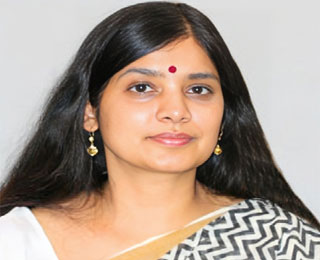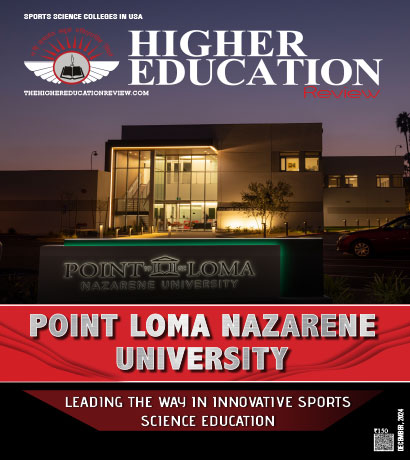Embracing a Holistic Approach to Transformative Education in the Digital Era

Bijayalaxmi Nanda, Principal, Miranda House
Higher education is currently undergoing a technological revolution driven by constant innovation. Traditional classrooms are undergoing digitization, and there is seamless integration of virtual reality and artificial intelligence. These changes are not only transforming the educational landscape as a whole but also impacting the way learning occurs, communication takes place, and administrative tasks are handled. The undeniable transformative impact signifies the dawn of a new era, where technology assumes a central role in shaping the future direction of higher education.
Technological Integration in Education
The COVID-19 pandemic served as a catalyst for the surge in online learning and distance education, emphasizing the need for a paradigm shift in educational delivery. Learning management systems have become pivotal in this shift, providing the infrastructure for seamless virtual classrooms. However, the integration of cutting-edge technologies, such as virtual reality and augmented reality, demands concerted efforts from institutions. In the fields of physical sciences, these technologies revolutionize hands-on training, offering a risk-free environment for skill development. Yet, their effective integration into the curriculum requires institutional commitment. Prioritizing faculty training, curriculum redesign, infrastructure investment, collaboration with tech industries, ensuring accessibility, promoting inclusivity, and continuous evaluation are crucial components of this holistic approach.
To bolster the overall student experience and success, institutions must adopt a multifaceted approach. Personalized learning paths, facilitated by adaptive technologies attuned to individual needs, are essential. Robust support structures encompassing academic advising, counselling, and tutoring, mentoring, and career guidance play a crucial role in nurturing student growth. An engaging and pertinent curriculum, coupled with active learning opportunities, initiatives promoting diversity, inclusion, belongingness, wellness programs, and financial support contribute to a holistic college experience. Continuous assessment and feedback from stakeholders are pivotal for refining strategies, and ensuring their efficacy in fostering academic success and personal development.
Cultivating a Culture of Innovation and Creativity
Cultivating a culture of innovation and creativity is imperative in preparing students for the dynamic landscape of the future workforce. Institutions can foster innovative thinking through various means, such as flipped classroom contexts, role play, learning by doing and placing students at the centre of their learning. Establishing strong industry linkages ensures that academic curricula remain aligned with real-world needs, while incubation labs, supported by corporate social responsibility, provide spaces for students to explore and develop innovative ideas. Critical to this strategy is the investment in resources, including cutting-edge technology and research facilities and creating an environment conducive to experimentation and creative exploration. Mentorship programs offer guidance from experts including professionals, and alignment with both local knowledge systems and global practices broadens students' perspectives.
Furthermore, placing a premium on authentic educational approaches, delivering empathy training to foster an understanding of various perspectives, and adopting innovative learning methods all play integral roles in shaping a comprehensive learning environment. This multifaceted strategy guarantees that institutions not only evolve into lively centres for nurturing creative thinking but also empower students with the indispensable skills and mindset required to navigate future challenges and opportunities successfully. In this manner, education transforms into a catalyst for innovation, propelling both societal advancement and individual success within the continually evolving educational landscape.
Establishing an inclusive educational environment necessitates a spectrum of strategies. Affirmative action policies, cultural competence training, accessible resources, and support services cater to the diverse needs of students. Celebrating diversity via cultural festivals, gender-neutral spaces, and inclusive language fosters a campus culture that embraces inclusivity. Regular climate surveys, responsive policies, and collaborations with diverse organizations contribute to maintaining an environment that supports students from various backgrounds. Continuous teacher education on current trends and best practices in higher education is vital for staying informed and fostering inclusivity within the educational community. These concerted efforts ensure that educational institutions not only recognize but actively cultivate diversity, creating an environment where every student feels valued and supported.
Professional Development for Educators
Educators play a pivotal role in shaping the educational landscape. Staying abreast of evolving educational landscapes demands a multifaceted approach to professional development. Participation in continuous learning programs, institutional research, and active membership in strategic planning committees are crucial elements. Peer networking, both within and outside the institution, fosters collaborative learning and the exchange of best practices. Regular engagement in research and publications, ensures educators remain informed about emerging trends. Actively participating in policy reviews aligns their practices with the goals of national education policies and global educational advancements.
To navigate the transformative landscape of higher education in the digital era, a comprehensive strategy is essential. This includes integrating technology, personalizing learning paths, establishing support structures, fostering innovation, promoting inclusivity and belongingness and providing continuous professional development for educators. These pillars collectively enable higher education institutions not just to adapt to technological advancements but also to optimize their capacity for student success and industry alignment. This approach is instrumental in shaping a generation of learners well-prepared for the future, ensuring that educational institutions remain relevant and effective in the rapidly evolving digital landscape.
Bijayalaxmi Nanda, Principal, Miranda House
Bijayalaxmi has joined Miranda House in 1993 and is a Professor in the Department of Political Science. She has numerous articles in reputed journals to her credit and currently working on the issues around declining child sex ratio, gender, policy and governance.
Technological Integration in Education
The COVID-19 pandemic served as a catalyst for the surge in online learning and distance education, emphasizing the need for a paradigm shift in educational delivery. Learning management systems have become pivotal in this shift, providing the infrastructure for seamless virtual classrooms. However, the integration of cutting-edge technologies, such as virtual reality and augmented reality, demands concerted efforts from institutions. In the fields of physical sciences, these technologies revolutionize hands-on training, offering a risk-free environment for skill development. Yet, their effective integration into the curriculum requires institutional commitment. Prioritizing faculty training, curriculum redesign, infrastructure investment, collaboration with tech industries, ensuring accessibility, promoting inclusivity, and continuous evaluation are crucial components of this holistic approach.
To bolster the overall student experience and success, institutions must adopt a multifaceted approach. Personalized learning paths, facilitated by adaptive technologies attuned to individual needs, are essential. Robust support structures encompassing academic advising, counselling, and tutoring, mentoring, and career guidance play a crucial role in nurturing student growth. An engaging and pertinent curriculum, coupled with active learning opportunities, initiatives promoting diversity, inclusion, belongingness, wellness programs, and financial support contribute to a holistic college experience. Continuous assessment and feedback from stakeholders are pivotal for refining strategies, and ensuring their efficacy in fostering academic success and personal development.
Cultivating a Culture of Innovation and Creativity
Cultivating a culture of innovation and creativity is imperative in preparing students for the dynamic landscape of the future workforce. Institutions can foster innovative thinking through various means, such as flipped classroom contexts, role play, learning by doing and placing students at the centre of their learning. Establishing strong industry linkages ensures that academic curricula remain aligned with real-world needs, while incubation labs, supported by corporate social responsibility, provide spaces for students to explore and develop innovative ideas. Critical to this strategy is the investment in resources, including cutting-edge technology and research facilities and creating an environment conducive to experimentation and creative exploration. Mentorship programs offer guidance from experts including professionals, and alignment with both local knowledge systems and global practices broadens students' perspectives.
Furthermore, placing a premium on authentic educational approaches, delivering empathy training to foster an understanding of various perspectives, and adopting innovative learning methods all play integral roles in shaping a comprehensive learning environment. This multifaceted strategy guarantees that institutions not only evolve into lively centres for nurturing creative thinking but also empower students with the indispensable skills and mindset required to navigate future challenges and opportunities successfully. In this manner, education transforms into a catalyst for innovation, propelling both societal advancement and individual success within the continually evolving educational landscape.
Establishing an inclusive educational environment necessitates a spectrum of strategies. Affirmative action policies, cultural competence training, accessible resources, and support services cater to the diverse needs of students. Celebrating diversity via cultural festivals, gender-neutral spaces, and inclusive language fosters a campus culture that embraces inclusivity. Regular climate surveys, responsive policies, and collaborations with diverse organizations contribute to maintaining an environment that supports students from various backgrounds. Continuous teacher education on current trends and best practices in higher education is vital for staying informed and fostering inclusivity within the educational community. These concerted efforts ensure that educational institutions not only recognize but actively cultivate diversity, creating an environment where every student feels valued and supported.
Professional Development for Educators
Educators play a pivotal role in shaping the educational landscape. Staying abreast of evolving educational landscapes demands a multifaceted approach to professional development. Participation in continuous learning programs, institutional research, and active membership in strategic planning committees are crucial elements. Peer networking, both within and outside the institution, fosters collaborative learning and the exchange of best practices. Regular engagement in research and publications, ensures educators remain informed about emerging trends. Actively participating in policy reviews aligns their practices with the goals of national education policies and global educational advancements.
To navigate the transformative landscape of higher education in the digital era, a comprehensive strategy is essential. This includes integrating technology, personalizing learning paths, establishing support structures, fostering innovation, promoting inclusivity and belongingness and providing continuous professional development for educators. These pillars collectively enable higher education institutions not just to adapt to technological advancements but also to optimize their capacity for student success and industry alignment. This approach is instrumental in shaping a generation of learners well-prepared for the future, ensuring that educational institutions remain relevant and effective in the rapidly evolving digital landscape.
Bijayalaxmi Nanda, Principal, Miranda House
Bijayalaxmi has joined Miranda House in 1993 and is a Professor in the Department of Political Science. She has numerous articles in reputed journals to her credit and currently working on the issues around declining child sex ratio, gender, policy and governance.

